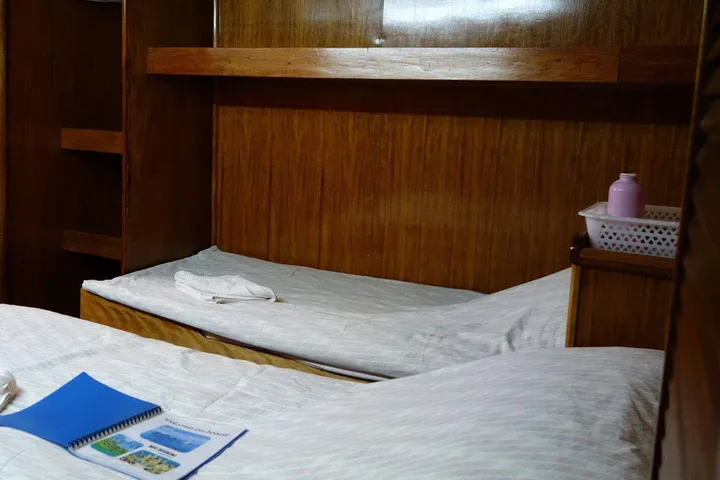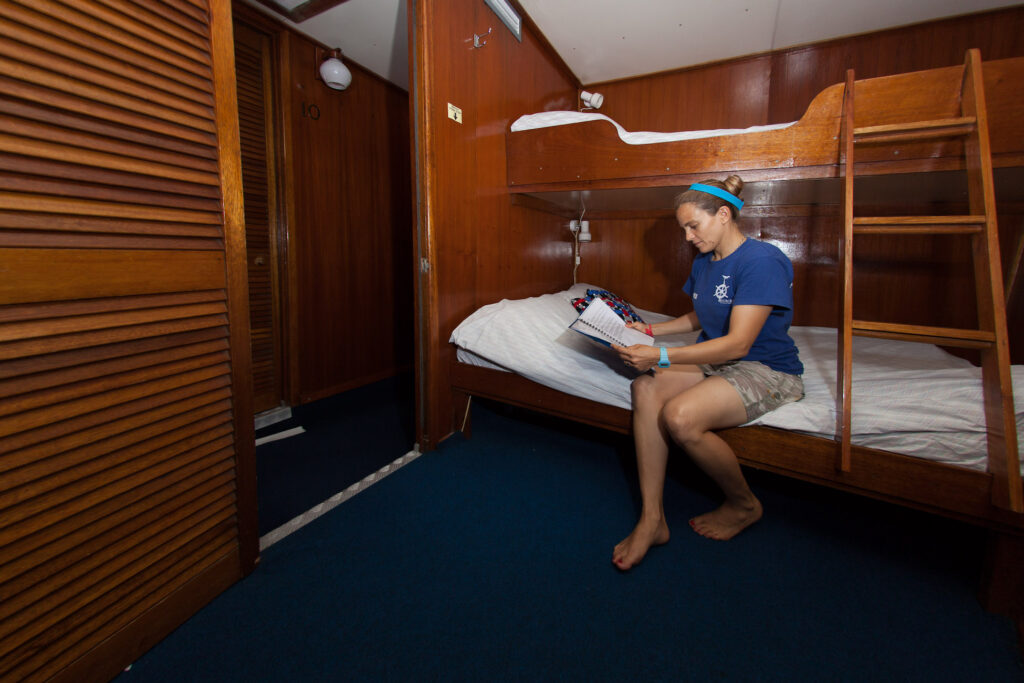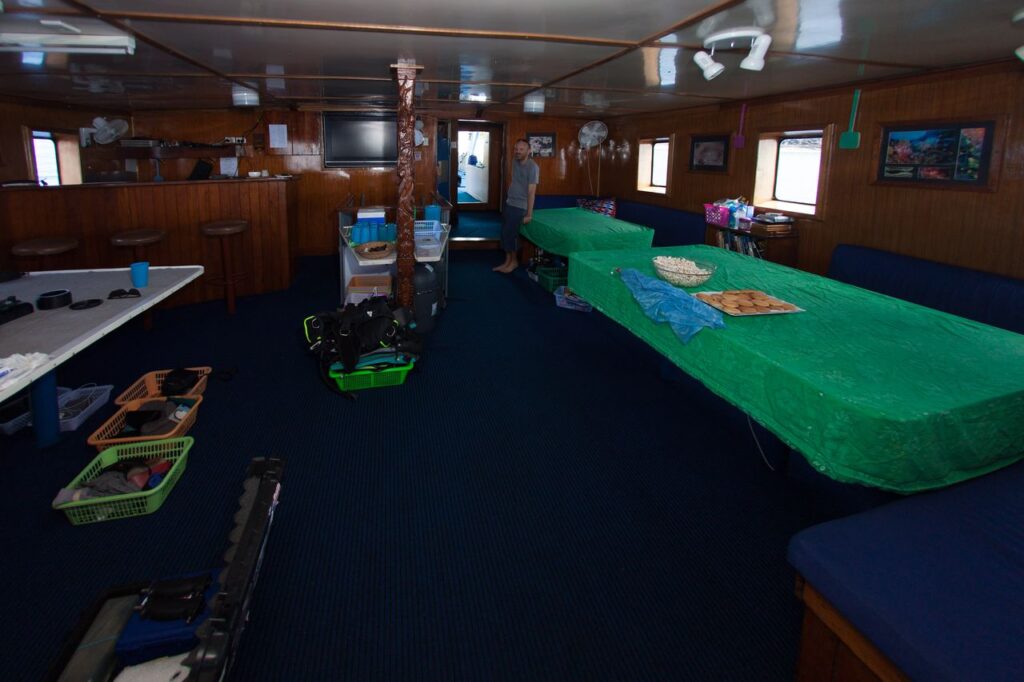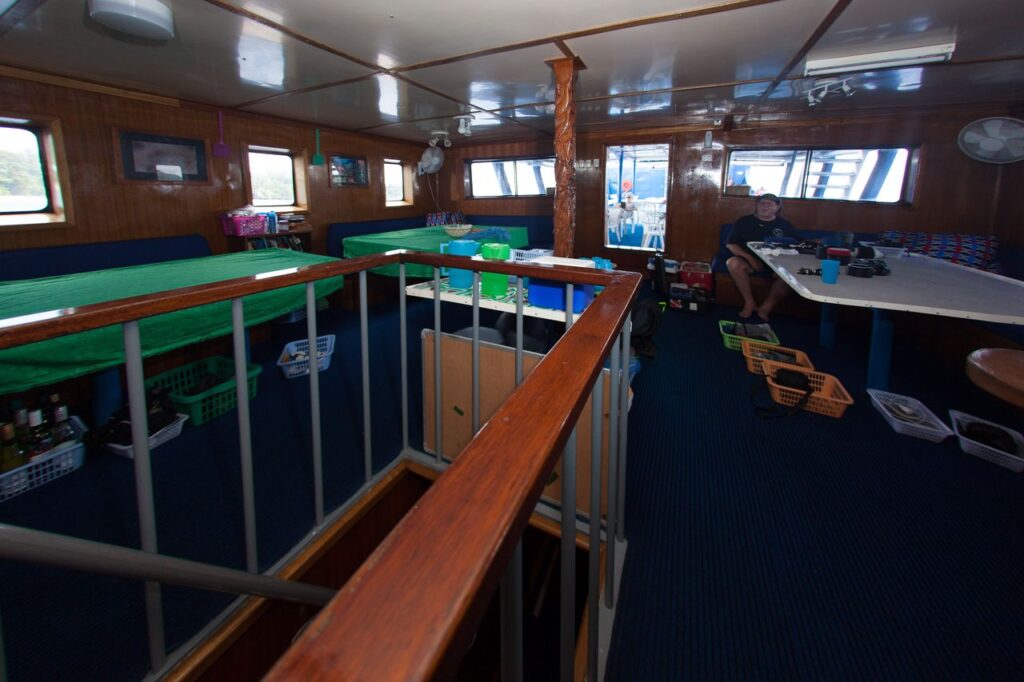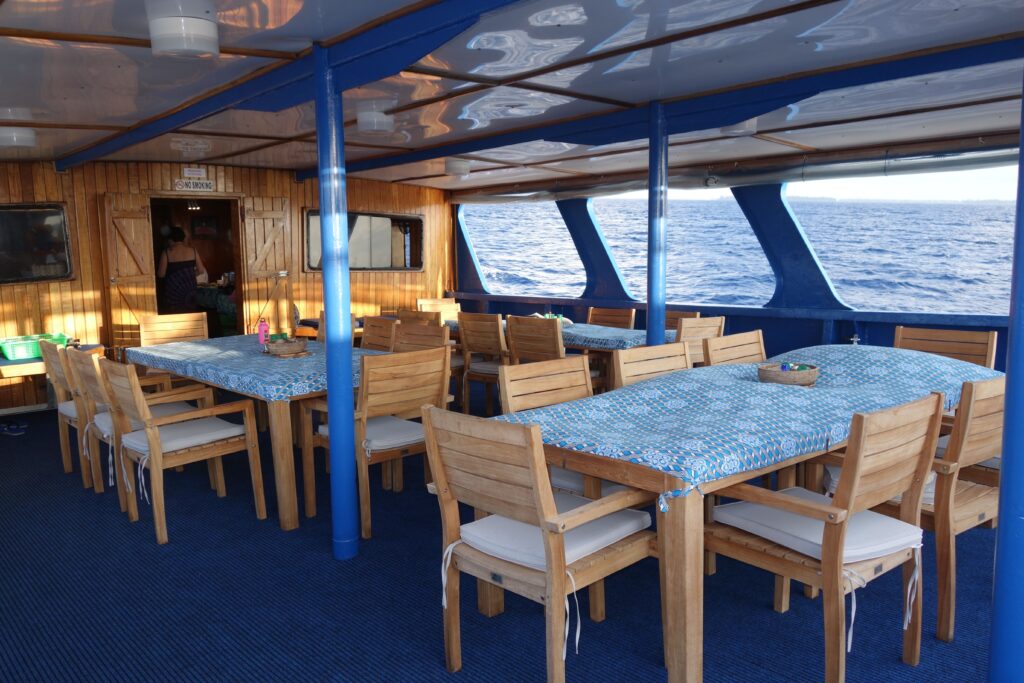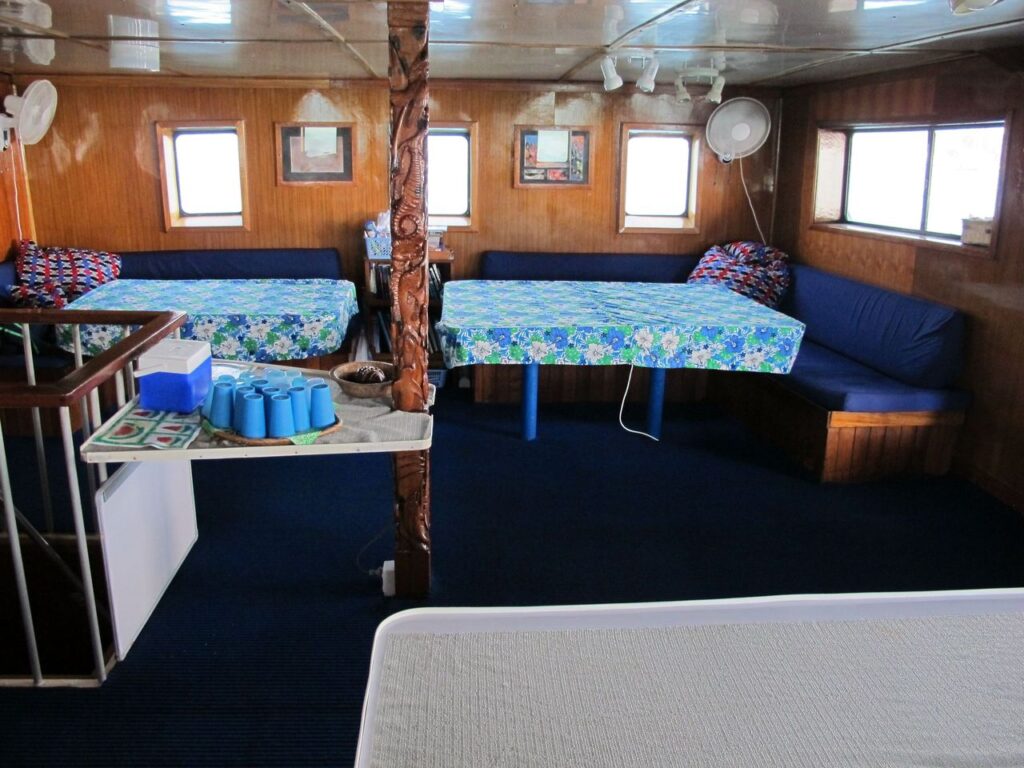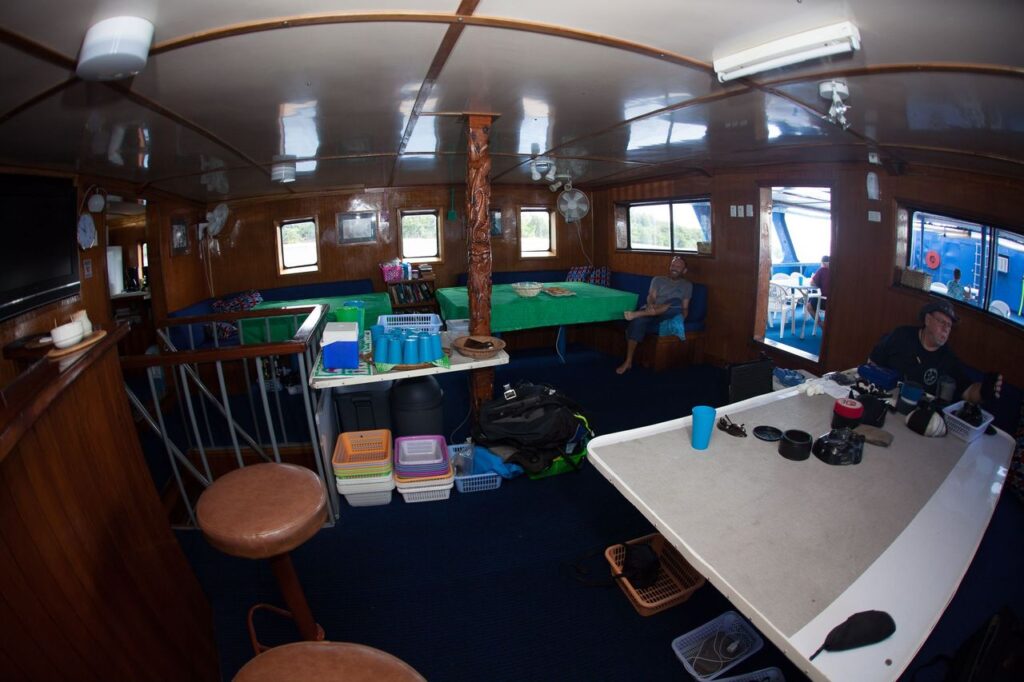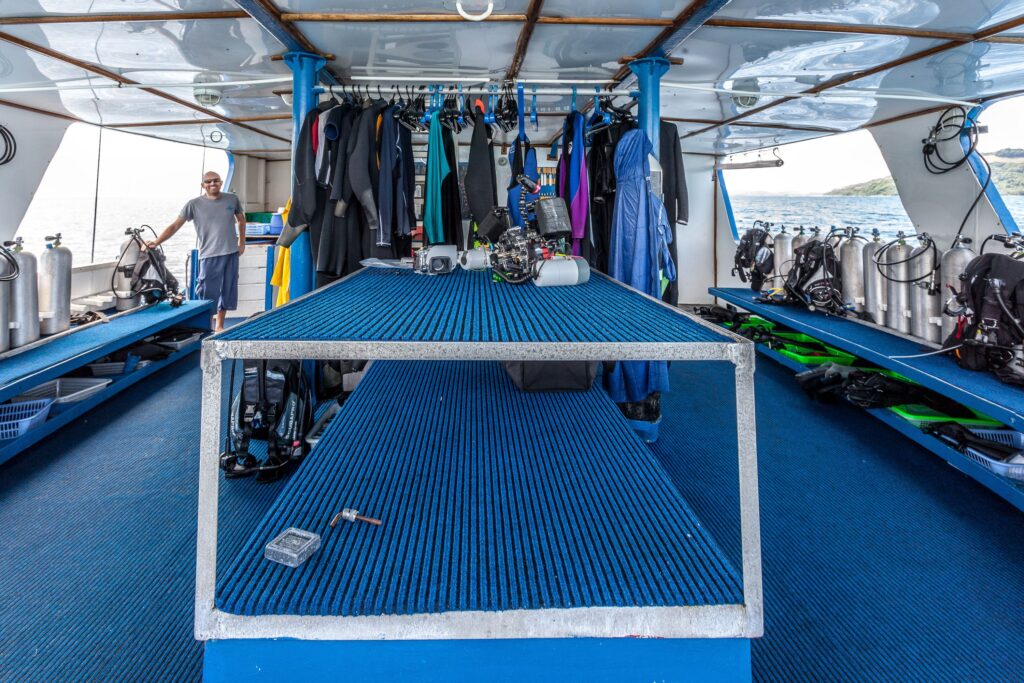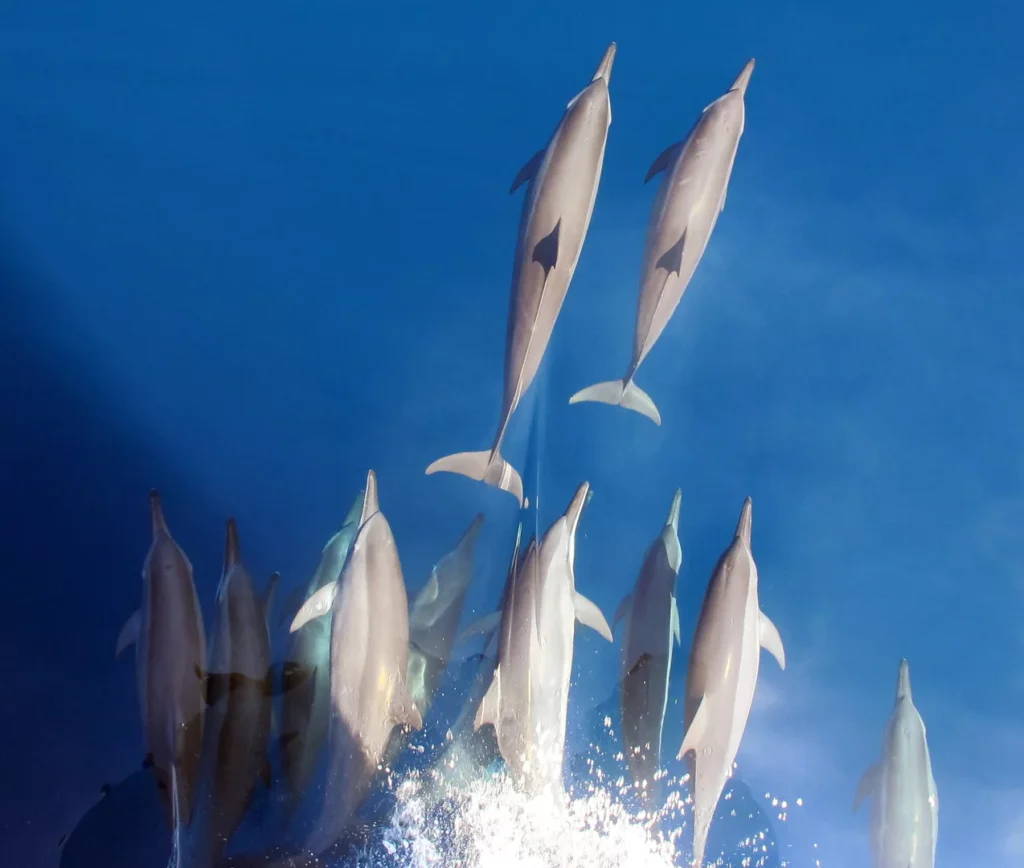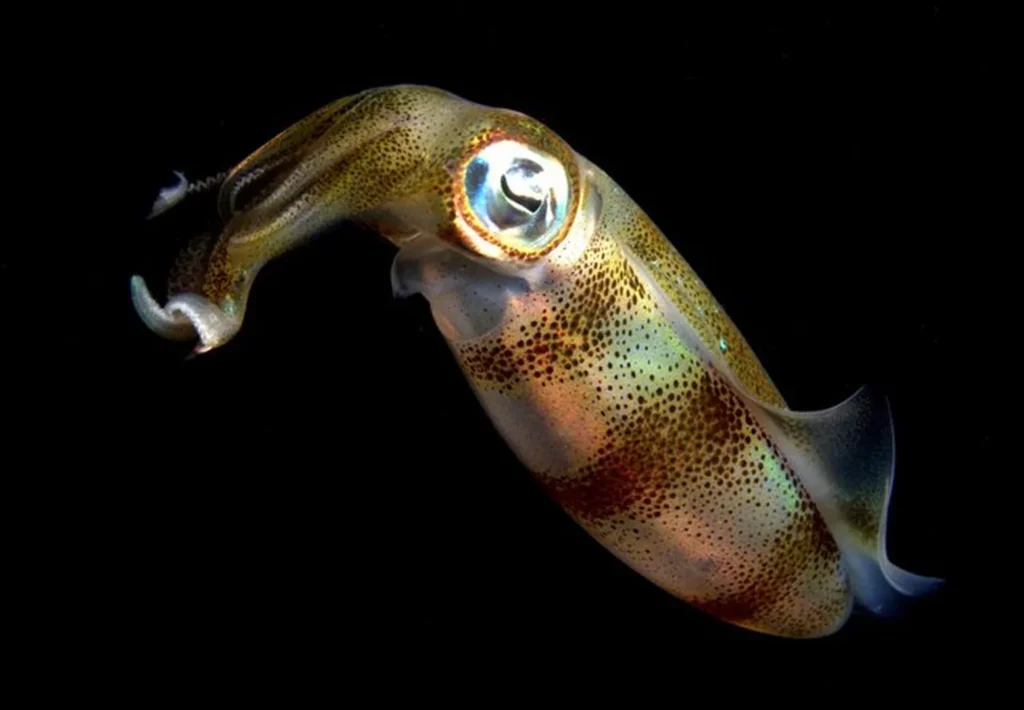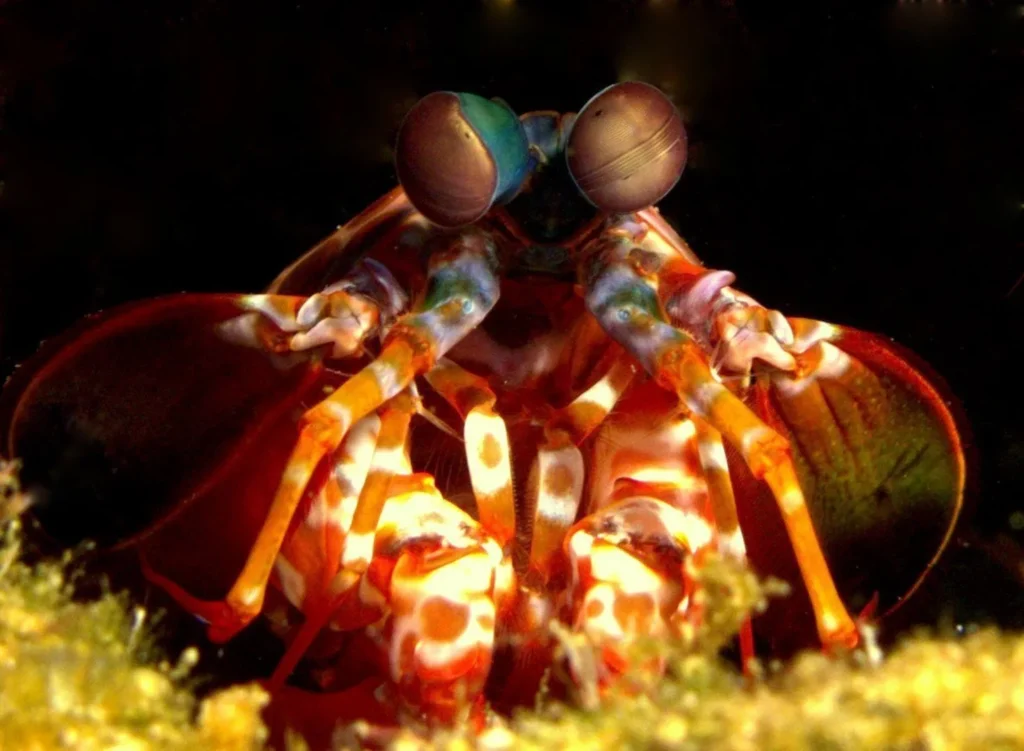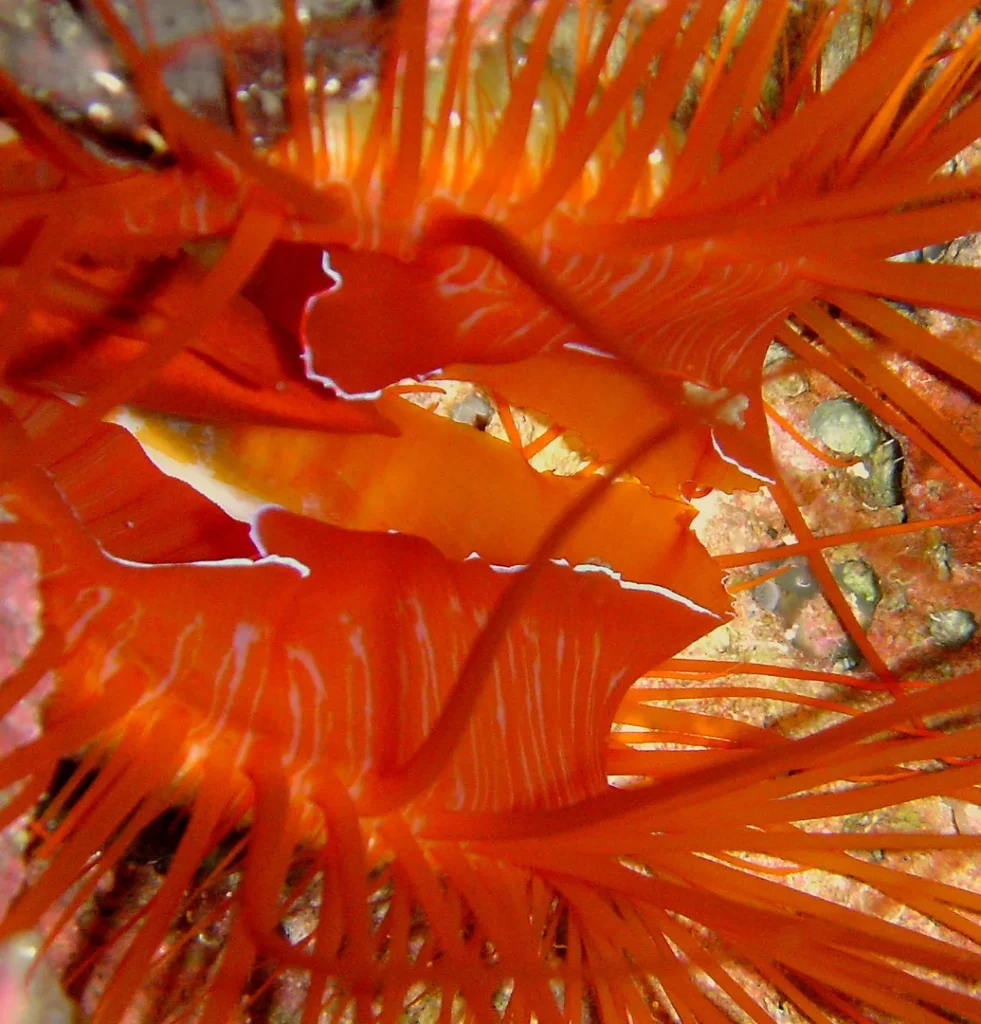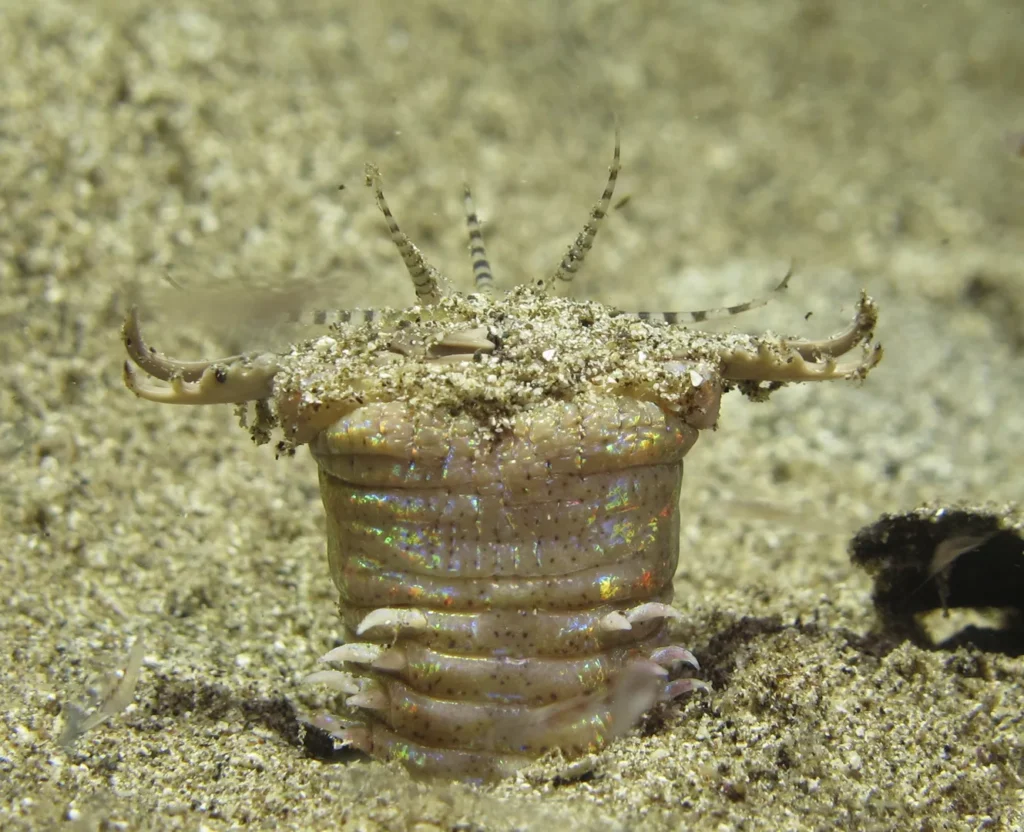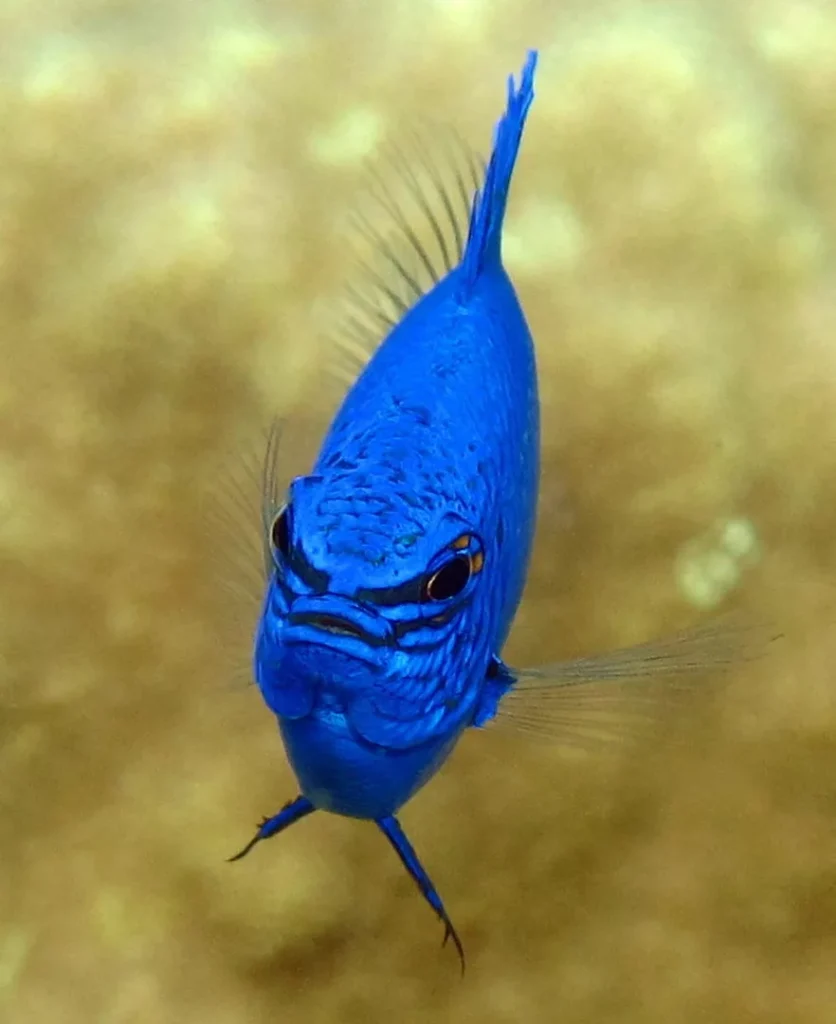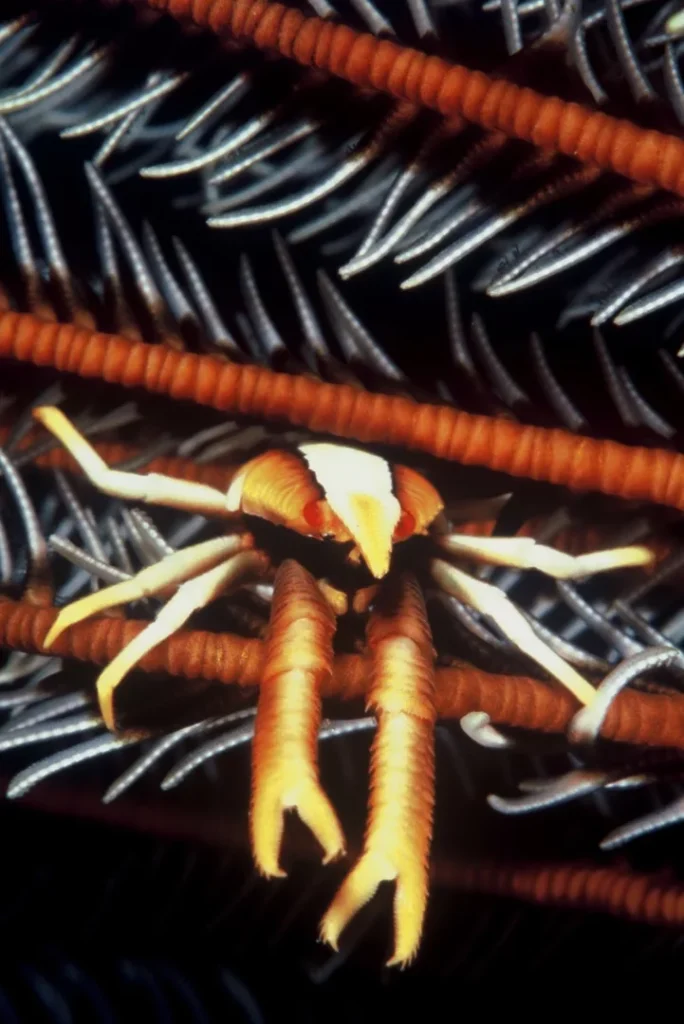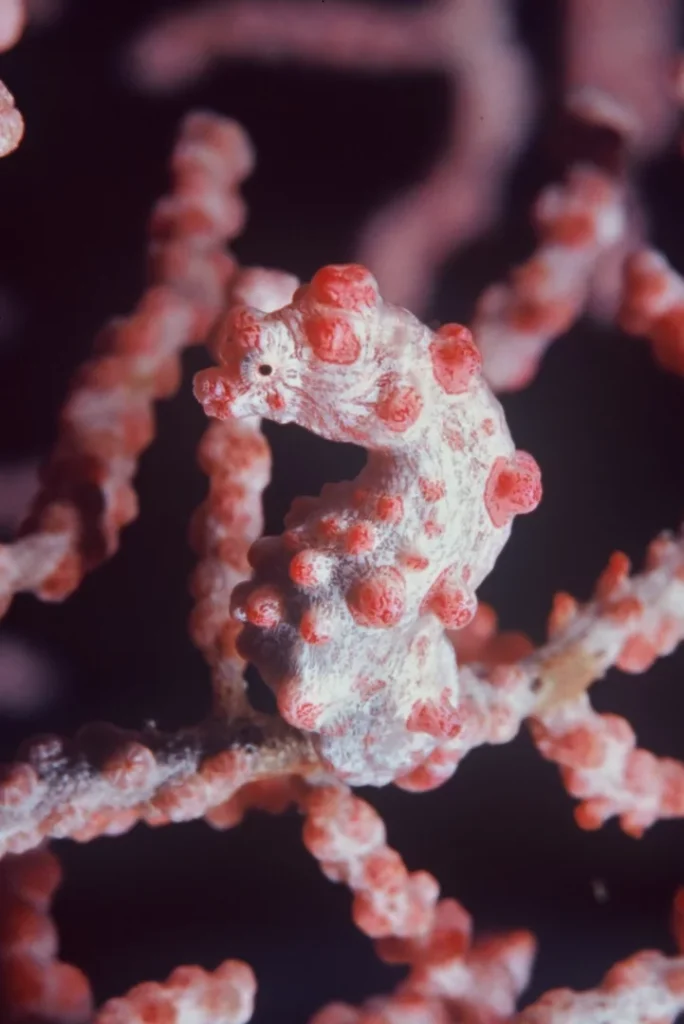
Cabin Price
Start at $591
Departure
Honiara
Destination/Type
Bilikiki Liveaboard
Highlights:
The M/V Bilikiki sailed as the first full-service luxury liveaboard dive vessel in the Solomon Islands and is rated as one of the top liveaboards in the area.
The MV Bilikiki Liveaboard has 10 deluxe air-conditioned en-suite cabins, immense sun decks, comfortably furnished lounge areas, and a bar. The MV Bilikiki, Solomon Islands, was designed perfectly for the South Pacific seas and is one of the reasons guests constantly rate the MV Bilikiki as one of the most spacious and comfortable vessels they have traveled on.
Aboard the MV Bilikiki Liveaboard, you will dive into the main 3 island groups of Florida Island, Russel Island, and Marovo Lagoon, which offer a vast array of diverse dive sites. The fantastic MV Bilikiki Liveaboard offers trips from March - December. The MV Bilikiki Liveaboard carries a crew of 11 well-trained, friendly, attentive, and professional staff and 2 managers to ensure your dive vacation is perfect. The M/V Bilikiki is an excellent choice for your scuba diving liveaboard holiday in the Solomon Islands.
Features:
Cabins
10 CabinsDuration
7-14 NightsNitrox
IncludedTrip Inclusions/Exclusions
Hotel or airport transfers (within 3 days of the trip), onboard accommodations, meals, one alcoholic drink per dinner, snacks, unlimited diving, weights, belt, tanks, and airfills.
USD $25.00 per person, per night tax (this will be added to the invoice for payment before the trip), bar drinks, nitrox, personal purchases, rental dive equipment and gratuities.
Join our newsletter and receive $100 credit
10 Nights
**All itineraries are subject to change at any moment**
Safety briefing, crew introduction, necessary dive paperwork, cabin allocation and ship orientation will take place before departing the harbor.
Journey to the first dive site for a check dive. Please take this opportunity to familiarize yourself with the vessel and make yourself comfortable.
Please Note: MV Bilikiki do not have set itineraries. Nº of dives, dive sites, etc. may be subject to change due to weather conditions and other unforeseeable factors.
There are so many dive sites in each area that we are able to go where the best diving is at any given time, and also cater to the type of diving that the guests on board prefer. In all cases rest assured that you will be offered the best diving available at the time.
Solomon Islands consists of hundreds of islands and groups of islands.
Dive the following island groups: Florida Islands, Russell Islands, Marovo Lagoon and Mary Island. Each of these island groups consists of dozens of islands and a vast array of dive sites.
Marine Life: The Solomon Island waters are very nutrient rich, and they support the entire food chain from microscopic creatures to major predators. You'll have a good opportunity to see a variety of sharks, mantas, dolphins, and turtles, and barracuda in uncountable numbers. In shallower waters you'll see almost every tropical creature imaginable, and some that will stretch your imagination. Cuttlefish, octopus, schooling lionfish, and amazing numbers and varieties of anemonefish, not to mention amazing varieties of anemones.
You'll see more varieties of coral than almost anywhere, and all this in 82 - 85ºF waters.
Possible dive sites:
Russell Island
Leru Cut, a channel back into Leru Island forms a breathtakingly beautiful reef formation which when dived at the right time of day has amazing beams of light and fantastic photo opportunities. Surface at the end and see the vine covered cliffs and jungle before descending and exiting onto a sheer wall of fans and soft coral.
White Beach, the site of an American WWII base where trucks, bombs and ammunition was dumped into the sea. Both a fascinating historical dive and a fantastic macro site in an unusual mangrove location.
Mirror Pond, a stunning pond reflecting the jungle overhead. Outside on the reef is a sheer wall where snappers and travelly hunt and pygmy seahorses hide in gorgeous gorgonian fans. The shallows host a stunning coral garden where crocodile fish, cuttlefish and anemone fish live.
Karumolun Point, the chief of Karumolun Island has banned all fishing and collecting on this dive site for five years creating a local marine protected area. This point has great soft coral, a big school of jacks, barracudas and lots of sharks, often eagle rays are seen here too. The macro side of this dive site is fantastic as well with disco clams (electric file shells), nudis, cuttlefish, crocodile fish and ghost pipefish among the things seen.
Mary Island
Divers often refer to Mary Island as the “best” dive of a trip. It is an uninhabited island with a stunning amount of hard corals and fish life. The schools of fish are amazing here especially when joined by sharks, turtles and bumphead parrot fish. We usually stay here for the whole day.
Florida Island
Twin Tunnels, this large sea mount, in the middle of the channel between Guadalcanal and the Florida Islands, has two tunnels which drop vertically straight down from 12m and exit in a cave at 35m. Swimming out of the cave to the sheer wall there are schools of fusiliers with grey reef sharks cruising by. It is also home to some amazing coral, cuttlefish, octopus and mantis shrimp plus schools of snapper, tropical fish and an amazing array of anemone fish.
Devils' Highway, the best place in the Solomons to dive with manta rays. A channel between two islands funnels water to form a strong currents and an adrenaline filled dive. Drift along the reef top, duck under the reef wall and watch as up to a dozen mantas swim close by in formation to feed. They are often joined by sweetlips, jacks and bumphead parrotfish.
Maravagi Bay, a macro divers delight! A calm protected bay offering all sorts of great macro subjects such as nudis, demon stinger, scorpion fish, cockatoo wasp fish, various pipefish, cuttlefish, juvenile batfish, various anemone fish, shrimps and crabs. Plus a few of giant clams and a small wreck packed with batfish and bream.
Japanese Mavis Seaplane, a Japanese seaplane sunk during WW2 which sits upright on the bottom at 30m, it is an impressively large, mostly intact plane. This site is also excellent for macro subjects with reef top pipefish, twin spot gobies and spine check anemone fish.
Marovo Lagoon
Kicha, not only is this dive site a truly stunning example of hard corals and sea fans, it is teeming with fish life. Friendly batfish follow divers around, schools of jacks and barracuda circle around the point while giant bumphead parrotfish chomp on coral. All this amazing colour and beauty passes by to a sound track provided by the underwater volcano Kavachi which is only 15 miles away.
Mbulo Caves, a series of interconnecting caves and swim throughs with beautiful sun beams and a magical atmosphere. There is also staggering hard coral and tropical fish on the reef out side.
Wickham Island, there are a lot of amazing dive sites around this island. It has something for everyone with soft coral points, huge sea fans, sharks and rays. Plus great places to look for the small stuff such as pygmy seahorses, cuttlefish, crocodile fish, snake eels and many different species of anemone fish.
Japanese Maru #2, a Japanese cargo vessel sunk by American bombers in WW2 this is a a stunning photogenic wreck covered in black corals. A deck gun lies hanging over the side of the ship and trevally and groupers hunt the decks.
2 dives in the morning depending on guest flight schedules and the 24 hour requirement before flying.
Disembark
8:00 am
13 Nights
**All itineraries are subject to change at any moment**
Safety briefing, crew introduction, necessary dive paperwork, cabin allocation and ship orientation will take place before departing the harbor.
Journey to the first dive site for a check dive. Please take this opportunity to familiarize yourself with the vessel and make yourself comfortable.
Please Note: MV Bilikiki do not have set itineraries. Nº of dives, dive sites, etc. may be subject to change due to weather conditions and other unforeseeable factors.
There are so many dive sites in each area that we are able to go where the best diving is at any given time, and also cater to the type of diving that the guests on board prefer. In all cases rest assured that you will be offered the best diving available at the time.
Solomon Islands consists of hundreds of islands and groups of islands.
Dive the following island groups: Florida Islands, Russell Islands and Mary Island. Each of these island groups consists of dozens of islands and a vast array of dive sites.
Marine Life: The Solomon Island waters are very nutrient rich, and they support the entire food chain from microscopic creatures to major predators. You'll have a good opportunity to see a variety of sharks, mantas, dolphins, and turtles, and barracuda in uncountable numbers. In shallower waters you'll see almost every tropical creature imaginable, and some that will stretch your imagination. Cuttlefish, octopus, schooling lionfish, and amazing numbers and varieties of anemonefish, not to mention amazing varieties of anemones.
You'll see more varieties of coral than almost anywhere, and all this in 82 - 85ºF waters.
Possible dive sites:
Russell Island
Leru Cut, a channel back into Leru Island forms a breathtakingly beautiful reef formation which when dived at the right time of day has amazing beams of light and fantastic photo opportunities. Surface at the end and see the vine covered cliffs and jungle before descending and exiting onto a sheer wall of fans and soft coral.
White Beach, the site of an American WWII base where trucks, bombs and ammunition was dumped into the sea. Both a fascinating historical dive and a fantastic macro site in an unusual mangrove location.
Mirror Pond, a stunning pond reflecting the jungle overhead. Outside on the reef is a sheer wall where snappers and travelly hunt and pygmy seahorses hide in gorgeous gorgonian fans. The shallows host a stunning coral garden where crocodile fish, cuttlefish and anemone fish live.
Karumolun Point, the chief of Karumolun Island has banned all fishing and collecting on this dive site for five years creating a local marine protected area. This point has great soft coral, a big school of jacks, barracudas and lots of sharks, often eagle rays are seen here too. The macro side of this dive site is fantastic as well with disco clams (electric file shells), nudis, cuttlefish, crocodile fish and ghost pipefish among the things seen.
Mary Island
Divers often refer to Mary Island as the “best” dive of a trip. It is an uninhabited island with a stunning amount of hard corals and fish life. The schools of fish are amazing here especially when joined by sharks, turtles and bumphead parrot fish. We usually stay here for the whole day.
Florida Island
Twin Tunnels, this large sea mount, in the middle of the channel between Guadalcanal and the Florida Islands, has two tunnels which drop vertically straight down from 12m and exit in a cave at 35m. Swimming out of the cave to the sheer wall there are schools of fusiliers with grey reef sharks cruising by. It is also home to some amazing coral, cuttlefish, octopus and mantis shrimp plus schools of snapper, tropical fish and an amazing array of anemone fish.
Devils' Highway, the best place in the Solomons to dive with manta rays. A channel between two islands funnels water to form a strong currents and an adrenaline filled dive. Drift along the reef top, duck under the reef wall and watch as up to a dozen mantas swim close by in formation to feed. They are often joined by sweetlips, jacks and bumphead parrotfish.
Maravagi Bay, a macro divers delight! A calm protected bay offering all sorts of great macro subjects such as nudis, demon stinger, scorpion fish, cockatoo wasp fish, various pipefish, cuttlefish, juvenile batfish, various anemone fish, shrimps and crabs. Plus a few of giant clams and a small wreck packed with batfish and bream.
Japanese Mavis Seaplane, a Japanese seaplane sunk during WW2 which sits upright on the bottom at 30m, it is an impressively large, mostly intact plane. This site is also excellent for macro subjects with reef top pipefish, twin spot gobies and spine check anemone fish.
2 dives in the morning depending on guest flight schedules and the 24 hour requirement before flying.
Disembark
8:00 am


